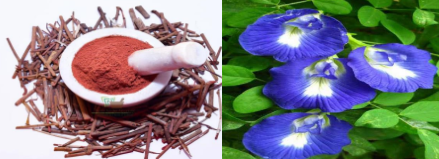The field of cosmetology is increasingly shifting focus towards natural products and away from artificial ones, driven by a growing consumer demand for plant-based skincare alternatives. While the skin, the body’s largest organ, constantly attempts self-repair, environmental stressors like pollution, UV rays, and inadequate makeup removal often lead to issues such as dry patches, wrinkles, pigmentation, and signs of aging.
To address these cosmetic issues efficiently, researchers have turned to highly concentrated formulations known as serums. Serums are preferred over conventional creams and lotions because they contain up to ten times more biologically active ingredients, allowing them to penetrate deeper layers of the skin to release active substances faster. Furthermore, Ayurvedic cosmetics, derived from natural herbal extracts, are considered highly reliable due to their safe and all-purpose activity. This study sought to leverage these advantages by exploring the formulation of a natural face serum utilizing the synergistic actions of Clitoria Ternatea (butterfly pea) and Rubia Cordifolia (Manjistha). These botanical ingredients were selected for their potent antioxidant and anti-inflammatory properties, aiming to provide a holistic approach to skincare that promotes a healthy, even-toned, and youthful appearance. Specifically, C. ternatea is rich in anthocyanins and flavonoids, helping to combat oxidative stress and enhance skin elasticity, while Manjistha, a traditional Ayurvedic herb, is known to support skin detoxification and reduce pigmentation and acne scars.
Methods
This study involved extracting the Clitoria ternatea flowers by cleaning, drying at 60°C, and grinding them into a powder, which was then dissolved in DI water. The formulation was prepared as an oil-in-water (o/w) biphasic emulsion, combining an oily phase (containing olive oil and Manjistha oil) and an aqueous phase (containing the C. ternatea extract, glycerine, and distilled water). The oily phase was mechanically swirled into the watery phase drop-by-drop at 2500 rpm to achieve the desired emulsion. The final formulation underwent evaluation for physical parameters, pH, viscosity, spreadability, stability, microbial examination (showing the formulation was free from microbes), and a screen irritation patch test on human volunteers.
Key Findings
• The herbal face serum, made with Clitoria ternatea and Manjistha, demonstrated promising results as a natural skincare product.
• The formulation maintained acceptable appearance, viscosity, and microbiological safety throughout the testing period.
• The serum displayed a constant pH range of 5.0–5.5, which is consistent with skin compatibility.
• Phytochemical analysis confirmed the presence of crucial components, including flavonoids, anthocyanins, and phenolic compounds.
• The presence of these phytochemicals contributes to the serum’s predicted antioxidant, anti-inflammatory, and skin brightening characteristics.
• In vitro testing confirmed these functional claims by demonstrating considerable free radical scavenging action and modest tyrosinase inhibition.
• These findings indicate potential anti-aging and depigmentation advantages offered by the serum.
• Subjective feedback from users highlighted good sensory appeal, ease of absorption, and noticeable improvement in skin texture and hydration upon regular application.
• The screen irritation test conducted on human volunteers validated the dermal safety of the serum, showing no adverse response.
The research successfully developed and evaluated a unique herbal face serum based on the combination of Clitoria Ternatea and Manjistha. The novelty of this research lies in creating a safe, stable, and effective natural formulation that capitalizes on the known potent properties of these two traditional herbs in a highly absorbable serum base. This synergy directly addresses the contemporary preference for plant-based solutions. The future implication of this research is substantial, as this Clitoria Ternatea and Manjistha-based formulation is deemed suitable for inclusion in cosmetic skincare regimens, particularly for its proven potential in brightening, anti-aging, and soothing applications.
Link to the study: https://tinyurl.com/bdhs4ubt

